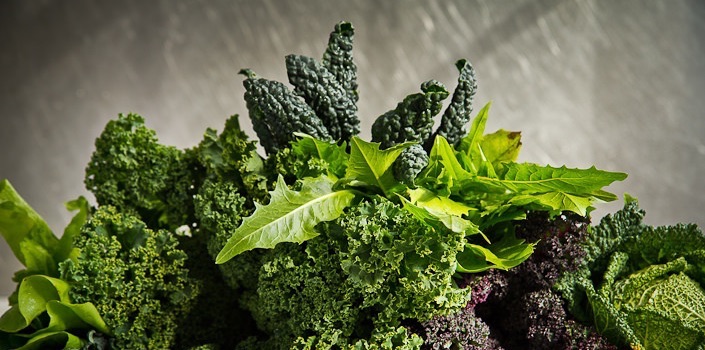Winter Greens: Top Tips and Favourite Recipes

Whether you’re on a health kick this January or are just craving hearty winter comfort foods, now is the time to get acquainted with your winter greens. For inspiration, we’re looking to Italy, a country that boasts an enviable variety of winter greens. We host a cookery holiday in Italy every year, where we bask not only in the sun, but also in the country's abundance of hearty wholesome greens. Fortunately, most of the greens grow here in the UK, so all of us can enjoy a taste of Italy, even in the winter, thanks to these nutritious green vegetables (and our easy to follow recipes that make use of them!).
Kale
Kale is from the brassica family, which includes some of our most familiar vegetables like cabbage and cauliflower. Kale comes in many varieties: green and purple, curly kale, crinkly Russian kale, and cavolo nero, a variety we especially love.
Cavolo nero hails from Italy but grows easily here. It’s also known as black cabbage, Tuscan cabbage and dinosaur kale (I rather like the latter description as it is an impressive statuesque plant, fine enough to grace an herbaceous border).
When buying kale and cavolo nero, freshess is paramount. Avoid the chopped up stuff in plastic bag which combines leaves with tough stems. Instead, seek out whole leaves at your local green grocers, farm shop, or food market.
Kale stems are edible but a bit tough, so we recommend stripping the leaves off of the stem before cooking (your compost heap will love the stems!). Kale and cavolo nero work well lightly steamed, stir-fried and added to soups and stews. Try dehydrating for kale chips, add a handful of curly kale to a smoothie, or massage your kale with lemon and oil for a raw salad.
Try our kale recipes:
- La Ribollita
- Black Chickpea, Spelt, Squash and Greens Hotpot
- West Country Broth with Cheddar and Mustard Toast
Cime di Rapa
Like cavolo nero, cime di rapa is another interesting Italian vegetable. It’s from the same family as turnips and brassicas. It grows only 30-40 centimetres high and has turnip-like leaves with a cluster of yellow flowers that resemble yellow rape.
Cime di rapa has a mustard oil tang with a gentle bitterness. In Italy they eat the flower buds before they open. Unfortunately this winter green is difficult to find in supermarkets, but it’s easy to grow in your garden. If all else fails, purple sprouting broccoli is a good substitute.
If you’re lucky enough to get hold of cime di rama, try making orecchiette con cime di rapa.
Purple Sprouting Broccoli
Purple sprouting broccoli can be either purple or green, but there is little difference between the two colours taste-wise. The purple variety becomes green on cooking.
It’s best to buy purple sprouting broccoli loose so that you can check that it’s fresh and the flower buds are tight. When bought from supermarkets in plastic they tend to sweat and can smell and taste horrible - best avoided!
Purple sprouting broccoli has been described as “Italian Asparagus” and can be treated in the same way, lightly steamed and served simply with aioli.
Never overcook sprouting broccoli as it becomes mushy, looses its colour and most of the peppery flavour.
Try our purple sprouting broccoli recipes:
Chicory
Chicory leaves have a characteristic bitterness that the Italians love. This bitterness varies greatly from a gentle hint in young leaves to a lovely, robust bitterness that enhances the flavour and enjoyment of dishes such as fave e ciboria.

The chicory family is an exciting and greatly varied family of leafy plants. In Italy, there are more than 600 different varieties. They grow right across the year and are available as green shoots in the spring and as puntarelle and big-hearted vegetables in the summer. Many chicory varieties happily grow into the winter, surviving even in the snow of the lower Alps. Wild chicory grows widely in Britain. Bright blue flowers signal its presence in meadows and is a foragers delight.
All of the chicories can be grown in your garden and grow through the winter, with varieties such as treviso and radicchio turning a beautiful deep crimson colour as the weather gets colder.
Try our chicory recipes:
To learn more about these wonderful Italian greens, join us on our next Italian vegetarian cookery holiday or come along to one of our Italian classes.
Food photography by superstar Rob Wicks of Eat Pictures.
Find us on Facebook, Twitter, Pinterest and Instagram where we are chatting about all things foodie and, if you like this post, please share it! To keep up to date with events and goings on at the cookery school sign up for our newsletter.









